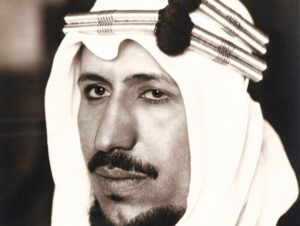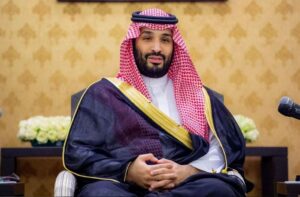The position of Prime Minister in Saudi Arabia has a unique history, with the office being created in 1953. Below is a detailed list of the Prime Ministers of Saudi Arabia, arranged along with their years of tenure.
| No. | Name | Time in Office |
|---|---|---|
| 1 | King Saud bin Abdulaziz | 9 October 1953 – 16 August 1954 |
| 2 | Crown Prince Faisal | 16 August 1954 – 21 December 1960 |
| 3 | King Saud bin Abdulaziz | 21 December 1960 – 31 October 1962 |
| 4 | King Faisal bin Abdulaziz | 31 October 1962 – 25 March 1975 |
| 5 | King Fahd bin Abdulaziz | 25 March 1975 – 21 February 1996 |
| 6 | King Abdullah bin Abdulaziz | 21 February 1996 – 23 January 2015 |
| 7 | King Salman bin Abdulaziz | 23 January 2015 – 27 September 2022 |
| 8 | Crown Prince Mohammed bin Salman | 27 September 2022 – Present |
READ ALSO: Presidents Who Have Ruled Afghanistan Till Date
The First Prime Minister: King Saud bin Abdulaziz

King Saud bin Abdulaziz was the first Prime Minister of Saudi Arabia, serving from October 9, 1953, until August 16, 1954. He was born on January 15, 1902, and was the eldest son of King Abdulaziz, the founder of modern Saudi Arabia.
Previous Positions Held
Before becoming Prime Minister, Saud was the Crown Prince and played a crucial role in the establishment of the Kingdom after his father’s death.
He was instrumental in creating the Council of Ministers and establishing various ministries, including Health, Education, and Commerce.
Notable Achievements
- Educational Development: Saud’s tenure saw the establishment of numerous schools and the first institute of higher education, King Saud University, in 1957.
- International Relations: He was the first Saudi monarch to visit the United States in 1957, marking a significant step in Saudi-American relations.
Downsides
- Power Struggles: Saud faced significant opposition from his half-brother, Crown Prince Faisal, leading to a power struggle that culminated in his abdication in 1964.
- Financial Issues: His reign was marred by financial difficulties, which contributed to his loss of support within the royal family.
READ ALSO: Presidents That Have Ruled Iraq Till Date
The Current Prime Minister: Crown Prince Mohammed bin Salman

Crown Prince Mohammed bin Salman (MBS) has been the Prime Minister of Saudi Arabia since September 27, 2022. Born on August 31, 1985, he is the son of King Salman and has been a prominent figure in Saudi politics.
Previous Positions Held
Before he was appointed Prime Minister, MBS served as Deputy Prime Minister and Minister of Defense. He became Crown Prince in June 2017, solidifying his position as the de facto ruler of the kingdom.
Notable Achievements
- Vision 2030: Launched in 2016, this ambitious plan aims to diversify the Saudi economy and reduce its dependence on oil, promoting tourism, entertainment, and technology.
- Social Reforms: MBS has implemented significant social changes, including lifting the ban on women driving and increasing women’s participation in the workforce.
- Economic Initiatives: The introduction of mega-projects like NEOM, a $500 billion city aimed at technological innovation and sustainability.
Downsides
- Human Rights Concerns: His tenure has been criticized for human rights abuses, including the crackdown on dissent and the controversial murder of journalist Jamal Khashoggi.
- Regional Tensions: MBS’s aggressive foreign policy, particularly in Yemen and against Iran, has led to increased tensions in the region.
READ ALSO: Presidents That Have Ruled South Korean Till Date
Conclusion
the role of the Prime Minister in Saudi Arabia has evolved significantly since its inception, reflecting the changing dynamics of the kingdom’s governance and the broader regional context.
The current leadership under Mohammed bin Salman continues to navigate complex challenges while pushing forward ambitious reforms aimed at transforming the Saudi economy and society.
